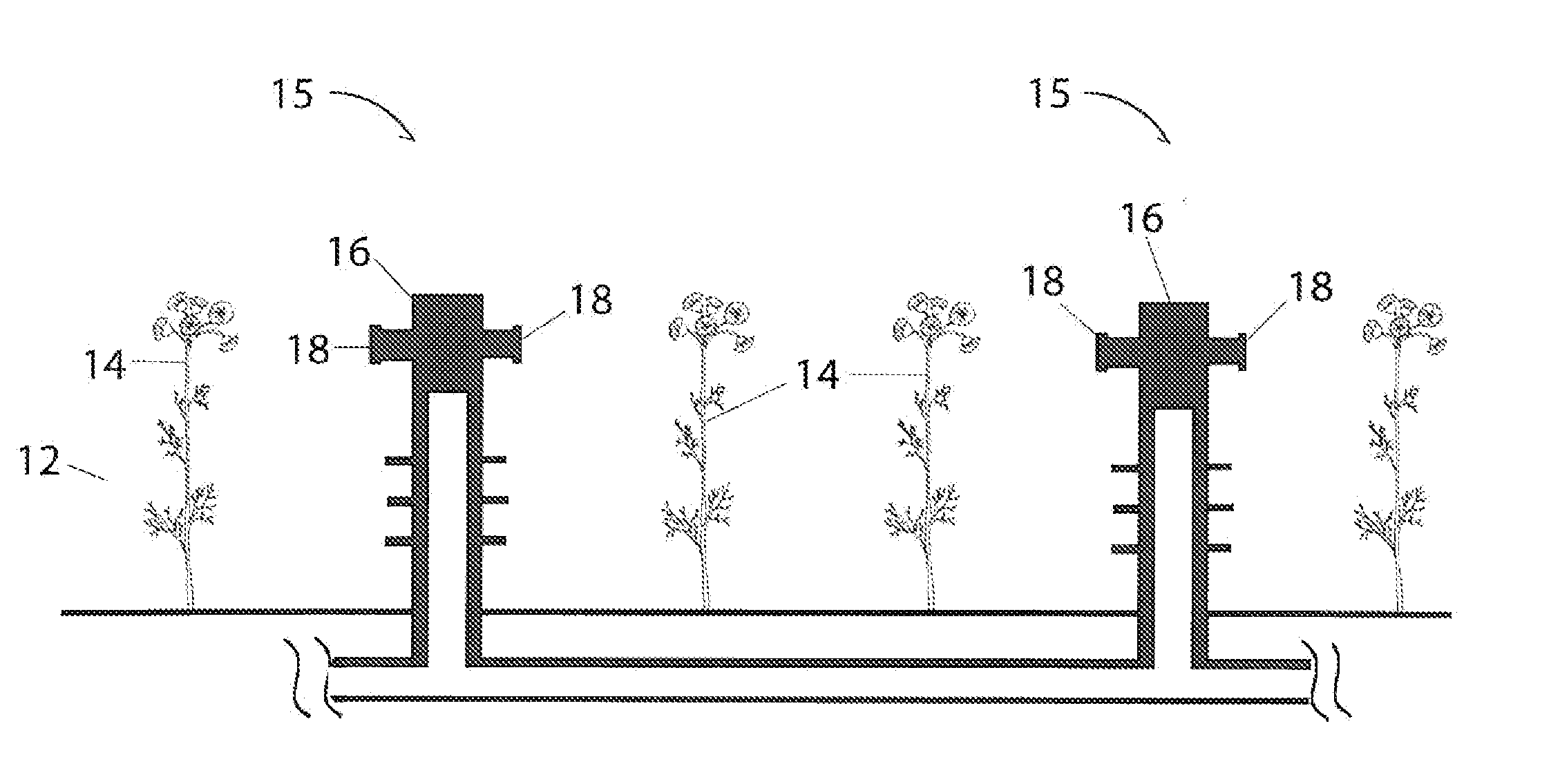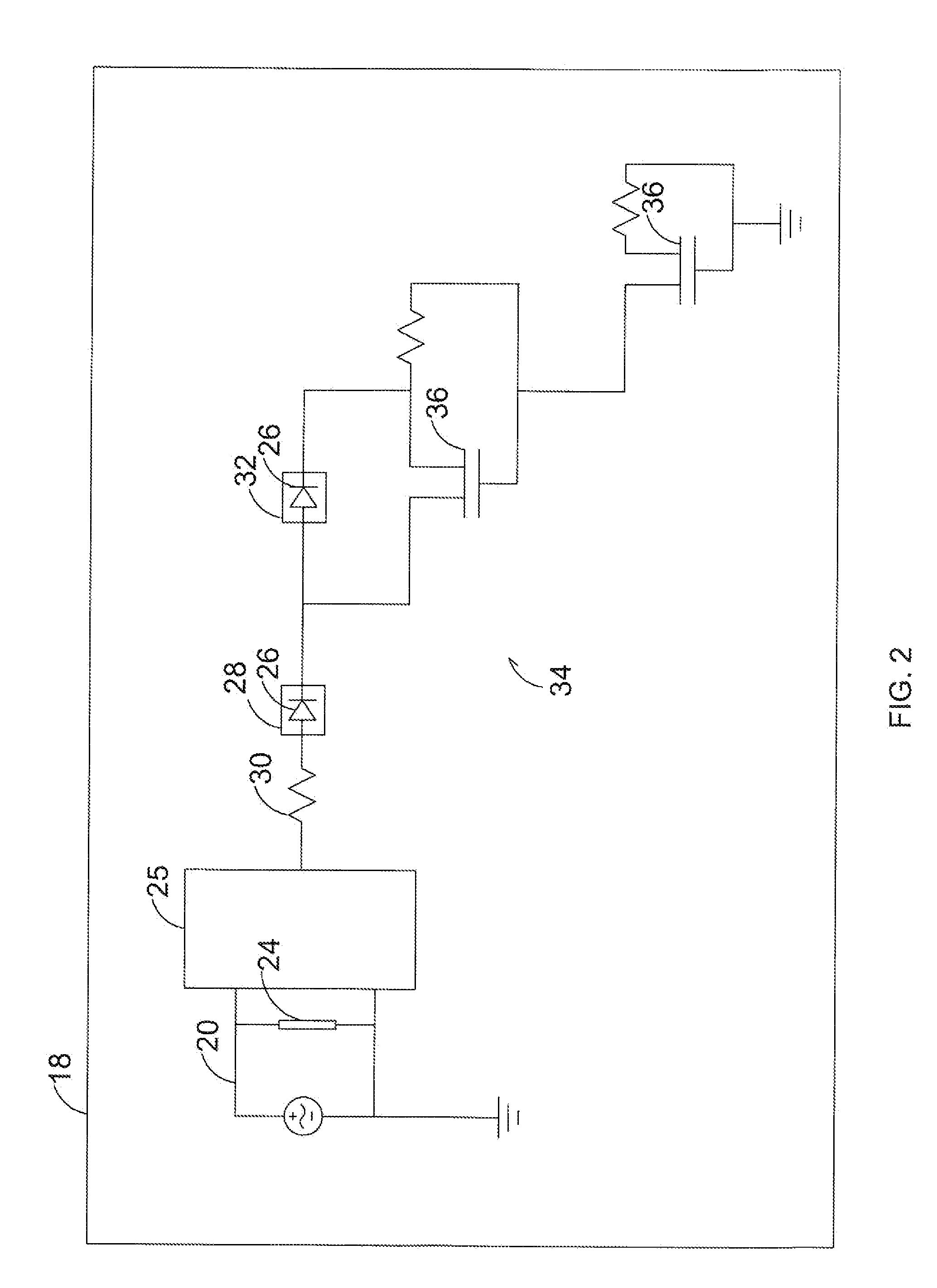Light sources adapted to spectral sensitivity of plant
a plant spectral sensitivity and light source technology, applied in the field of plant growth, can solve the problems of plant straining or fatiguing, plant cannot accept additional photons, and plant cannot be metabolized,
- Summary
- Abstract
- Description
- Claims
- Application Information
AI Technical Summary
Benefits of technology
Problems solved by technology
Method used
Image
Examples
Embodiment Construction
[0021]As shown in FIG. 1 a horticultural assembly 10 can be at any location, including outdoors, in a green house, indoors or the like. The assembly 10 includes a container or space 12 where plants 14 that are typically planted in side by side relation are located. While described as being planted in side by side relation, a single plant, or plurality of plants planted in any relation to one another is contemplated and does not fall outside of this disclosure. A water system 15 is also provided that preferably comprises a series of water conduits 16 that convey water to the plants 14 to assist in the growing process.
[0022]Positioned adjacent the plants are a plurality of light source assemblies 18 powered by an AC source. These assemblies 18 may be mounted or secured to the water conduits 16 of the water conduit system 14 or alternatively placed on a secondary conduit system or otherwise placed or mounted adjacent the plants 14 such that at least one plant receives radiation emitted...
PUM
 Login to View More
Login to View More Abstract
Description
Claims
Application Information
 Login to View More
Login to View More - R&D
- Intellectual Property
- Life Sciences
- Materials
- Tech Scout
- Unparalleled Data Quality
- Higher Quality Content
- 60% Fewer Hallucinations
Browse by: Latest US Patents, China's latest patents, Technical Efficacy Thesaurus, Application Domain, Technology Topic, Popular Technical Reports.
© 2025 PatSnap. All rights reserved.Legal|Privacy policy|Modern Slavery Act Transparency Statement|Sitemap|About US| Contact US: help@patsnap.com



